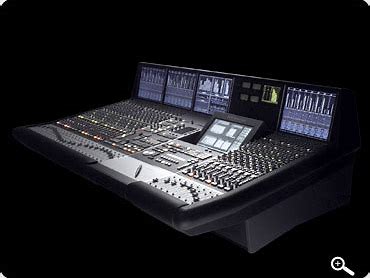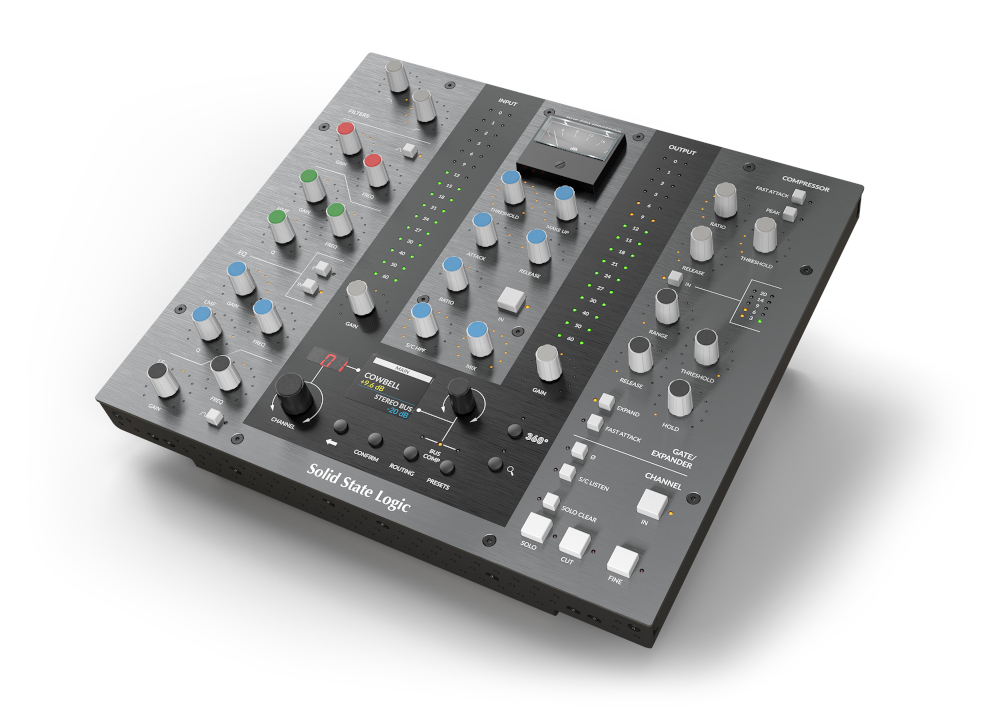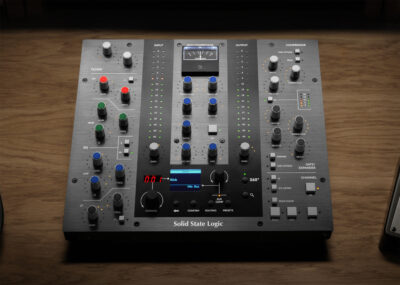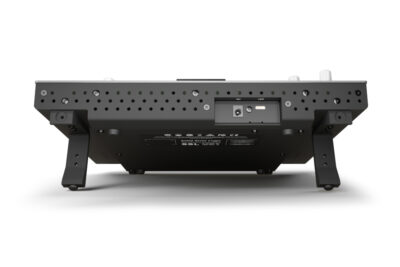SSL UC1 Review: Bringing Back Muscle Memory for Mixers
Will the SSL UC1 Hardware Plugin Controller Change Your Studio Workfow?
The morning after I had plugged in the SSL UC1 hardware plugin controller and downloaded the accompanying software, I sat down and started using it. I didn’t read the manual — I just grabbed some knobs and went for it.
I have been thinking for some time now that what I missed about console mixing was being able to grab a knob or push a button and instantly create. Now here I was really enjoying myself, having a right brain experience. I wasn’t pulling down a menu or mousing over a GUI knob, instead the analytical left brain was on standby and I was in a creative moment.
This was because I wasn’t even looking at my screen, just twisting knobs in response to what I was hearing just like I could on a console. The importance of this fact really stuck with me most of all. If you’ve spent time mixing on consoles, you’ll know just what I mean. I encourage mixers who haven’t had this intuitive experience to try out a controller and see if it doesn’t free your right brain too.
10,000 Foot View
You may be wondering, “Just what is the SSL UC1”? It’s a control surface for the SSL Channel Strip 2, 4K B, and the Bus Compressor 2 plugins, operating in tandem with the SSL Plug-in Mixer in the 360 software. SSL 360 is a cross-platform Mac and Windows application that creates a control center for 360-enabled software and hardware (like the UC1).
The unit is laid out as two halves of a channel strip with filters and EQ to the left and the dynamics section to the right. A bus compressor and input/output meters with gain control are located between. Below these is the Central Control Panel by which multiple functions can be executed. All this in a surface whose dimensions are 17” x 15.6” x 5.9”.
The controls are laid out such that those used to the traditional SSL channel strip and bus compressor will find that muscle memory you once used regularly is still there. If this is your first try, then you will soon find out all about it.
The unit ships with legs if you prefer the traditional angled attitude of a console. SSL wisely provides a non-wall wart power supply which plugs in comfortably along a crowded power strip. Two different power cables (one for Japan) came packaged along with USB C to C and C to A cables.
Features
For starters, this unit is not a flimsy piece of plastic. It is made of sturdy metal design with a brushed, anodized surface.
The individual knobs of the unit are each surrounded by a smart LED ring which coincides with the settings of the plugin you are controlling. There is also a “virtual notch” at 0 or null at which point the ring will dim. There are “in” buttons for the channel strip and the bus compressor as well as specific “in” buttons for the EQ and dynamic sections of a given track. Again, the dimming effect in the LED rings will show dim for sections/channels which are disengaged. The compression and expander/gate meters are the same 5 LED metering we are used to seeing on all the SSL channel dynamic sections of the past.
The Bus Compressor Meter is an actual moving coil gain reduction meter like the console but is digitally driven by the selected Bus Compressor. This model also includes a S/C HPF and Mix knobs for better tonal shaping.
Next to the Central Control Panel there is a Channel section which includes buttons for phase, S/C Listen, In, Solo, Cut, and Solo Clear. There is also a fine button to adjust your channel and bus compressor settings with greater resolution. This can be latched or momentary.
The Central Control Panel includes a digital display indicating the position of the selected channel within the Plug-in Mixer. In certain DAWs this order is determined by when during the session an SSL plugin was inserted. In others it simply follows the track layout of the host session. There are indicators for the channel strip model and the track name. Additionally, there is a readout for bus compressor names as well.
The channel controlled is determined by the “Channel Encoder” knob. The “Secondary Encoder” controls the selection of the Bus Compressor but can also control processor routing, plugin presets, and transport when properly configured. There is of course a display associated with this encoder as well.
The Back button from the home screen will allow access to an Extended Functions Menu for channel strips. When using presets this button is used to navigate the menu and functions as a stop button when configured for Transport mode. The Confirm button is used to select parameters but also scrolls forward through presets and is the Play button in Transport mode.
Located under the Second Encoder is a Routing and a Presets button. Routing allows the user to arrange the processing order on the channel strip. The Preset allows access to a variety of settings for both channels and bus compressors. The 360 button opens/minimizes the 360 app while Zoom toggles the Bus Compressor sidebar in the Plug-in Mixer.
In Use
As previously mentioned, the UC1 feels extremely intuitive. If you wish to stay on the hardware to work you can, but you can also access the plugins individually or through the Plug-in Mixer, both inside the box. This makes workflow easy as you can make adjustments regardless of the ergonomics of the situation. The UC1 itself presents an easy layout to manipulate and dive into the material while leaving the computer in the background.
Once I had taken it out for the first spin I decided to go through the setup process that SSL prescribes. I had already downloaded the software and updated my ilok account so I proceeded with the training video. SSL makes some great gear, but the YouTube video they directed me to after downloading the software was outdated and included feature set functions different from that of current versions. However, downloading the PDF covered setup and operation admirably.
The first order of business is to determine if SSL 360 will integrate into your DAW software for solo and cut. Many do not, so inserting a channel strip on each track is good practice. Plug-in Mixer may follow your DAW’s track order or it may follow the order by which the inserts were created. Again, session prep will pay off. The documentation here is well laid out and users will know how to best configure their setup easily.

The C200 — reviewer Rick Slater feels the control of this large format board in the much smaller UC1.
I found using the Control Panel to be easy enough in usage and any questions a user may have is, again, well documented.
For this article I inserted the Channel Strip 2 plugin across each track of a tracking session for a rock tune I recently cut. While working on the drums I was able to easily scroll through the individual tracks and make adjustments where needed without continuously paying attention to a screen.
I also put the SSL Bus Compressor 2 across a rough I quickly threw together. The effect was even more pronounced. Muscle memory allowed me to dial it in without doing much more than listening. In actuality the experience felt much like working on an SSL C200 digital console without needing a large format board. Without using the UC1 this process would have taken longer to achieve as my left and right brain would be constantly handing off tasks. While using this remote I was deep inside the music much quicker and far more easily than if I had not been using it.
To Be Critical
Being directed by SSL to a tutorial video that was out of date was a bit frustrating, but it also alerted me to the fact that the initial Zoom function had allowed the user to zoom up to sections of the Plug-in Mixer. This is far more useful than being relegated to opening the Bus Compressor panel. This feature does not appear to be currently available, but it would be nice to see it come back.
There are Pan and Width options in the Extended Function Menu and are the only thing I could not find adequate documentation for. The Pan function only appears when the Plugin Mixer channel is in mono/stereo or stereo instance. It will not appear on mono tracks. The Width Control is available on true stereo instances.
Summing It Up
On the face of it the price point of $800 for the UC1 seems steep. However, it comes bundled with Channel Strip 2 and Bus Compressor 2, each which cost $329.99, as well as a copy of the 4K B channel strip.
If you’re sold on the sound of SSL Native, then this total package makes good sense for both your workflow and your budget.
Looking back at this experience I was reminded of how Duro told me during a recent interview on vocal processing how he likes to use SSL channel strips. This brings me around to the fact that almost every mixer has some system they utilize to organize and speed up their workflow.
Aside from this whole “left/right brain” thing I began to see the whole picture: This is just such a system. By providing the user with all the signal control their classic consoles present alongside the sound many of us have heard on countless records, SSL gives us all the tools you need to operate. Sure, you can add flavors along the way, but your essential tools are always right there at your fingertips and easily accessible. For those readers who have deadlines and busy schedules having the UC1, the UF8 fader pack, and the 360 suite of plugins represent a powerful yet flexible system.
Desktop control surfaces have evolved from simpler fader and cut options to units that can provide tactile control over GUI interfaces for our plugins. Undeniably there is a growing market for these type of units and SSL has definitely planted their flag in it. From construction, intuitive layout, and great-sounding plugins they have shown that they continue to be one of the industry’s design leaders.
Rick Slater is a NYC area audio professional, writer, and educator. http://www.audiobyrickslater.com
Please note: When you buy products through links on this page, we may earn an affiliate commission.










[…] Source link […]